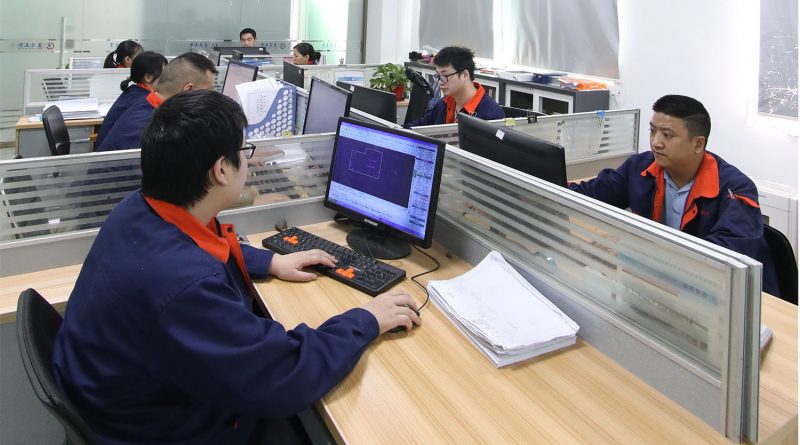The Future of Sheet Metal Fabrication in 2025
Sheet metal fabrication is evolving rapidly due to technological advancements, changing industry demands, and sustainability considerations. Here are some of the latest trends in sheet metal fabrication:
The sheet metal fabrication industry is undergoing a profound transformation, driven by technological advancements, sustainability concerns, and changing market demands. This article explores the future of sheet metal fabrication, highlighting key trends and forecasts that are shaping the industry’s evolution.
1. Automation and Robotics
Robotic Welding and Cutting: Robotic arms equipped with precision tools are increasingly used for welding, cutting, and handling tasks. Automation enhances efficiency, reduces human error, and improves overall production speeds.
CNC Machining: Computer Numerical Control (CNC) machines have become more advanced, allowing for greater precision and efficiency in metal forming, cutting, and punching operations.
2. Advanced Materials
Lightweight Alloys: There is a growing focus on using lighter materials like aluminum and titanium alloys, which offer high strength-to-weight ratios. These materials are crucial in industries like aerospace, automotive, and consumer electronics.
Composite Materials: In some cases, sheet metal is being combined with composite materials to create hybrid structures that offer superior strength and performance characteristics.

3. Laser Cutting and 3D Printing
Laser Cutting: Laser technology is becoming more advanced and widely adopted due to its precision, speed, and ability to work with a wide variety of metals. Fiber lasers, in particular, are gaining popularity for their efficiency and low maintenance.
Additive Manufacturing (3D Printing): While traditional sheet metal fabrication involves subtractive processes, additive manufacturing is beginning to be integrated into production lines, especially for complex or custom components.
4. Sustainability Initiatives
Energy Efficiency: Companies are focusing on reducing energy consumption during fabrication processes by using energy-efficient machines and optimizing production workflows.
Material Waste Reduction: Advanced software tools are being used to optimize material usage and reduce waste. This includes techniques like nesting, where parts are arranged on the metal sheet in the most efficient way possible to minimize scrap.
5. Smart Factories and IoT Integration
Data-Driven Manufacturing: The integration of IoT (Internet of Things) devices in sheet metal fabrication allows for real-time monitoring of machines, predictive maintenance, and data analytics to optimize production processes.
Digital Twins: Manufacturers are increasingly using digital twins, virtual replicas of physical assets, to simulate and optimize production processes before actual fabrication.
6. Custom Fabrication and Prototyping
On-Demand Fabrication: The demand for custom, small-batch production has grown, leading to the rise of on-demand fabrication services. Advanced CAD/CAM software and CNC machines allow for quick turnaround times on custom parts.
Prototyping: Rapid prototyping technologies, including 3D printing and CNC machining, allow for faster and more cost-effective development of prototypes.
7. Integration of AI and Machine Learning
Predictive Analytics: AI is being used to predict machine failures, optimize production schedules, and improve quality control by analyzing data collected from production lines.
Process Optimization: Machine learning algorithms can optimize processes like cutting paths, bending sequences, and material handling, further increasing efficiency and reducing costs.
8. Modular and Flexible Manufacturing
Modular Systems: Manufacturers are increasingly using modular systems that can be easily reconfigured to accommodate different types of fabrication processes. This flexibility is essential for companies that need to adapt quickly to changing customer demands.
Flexible Automation: Flexible automation solutions enable manufacturers to switch between different production tasks quickly, making it easier to manage a diverse product range.
9. Enhanced Safety Measures
Collaborative Robots (Cobots): These robots are designed to work alongside humans, enhancing safety by automating dangerous tasks while still allowing for human oversight.
Advanced Safety Sensors: Modern fabrication machines are equipped with sensors that can detect potential safety hazards, such as a human entering a dangerous zone, and can shut down operations immediately to prevent accidents.
10. Industry 4.0 Adoption
Smart Manufacturing: Industry 4.0 technologies, including AI, IoT, and cloud computing, are being integrated into sheet metal fabrication to enable smarter, more connected manufacturing processes. This results in increased efficiency, lower costs, and improved product quality.
These trends are shaping the future of sheet metal fabrication, driving improvements in efficiency, quality, and sustainability across industries. As technology continues to evolve, the sheet metal fabrication industry is likely to see even more advancements in the coming years.
Click sheet metal fabrication company china or china sheet metal forming manufacturers to learn more about sheet metal fabrication services.
For all your electrical enclosures from China, contact china sheet metal fabrication factory JIATONG now.




